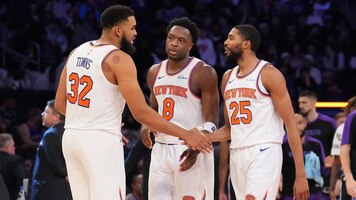5 New York Knicks Hot Takes Down the Stretch of 2024-25 NBA Season
5 New York Knicks Hot Takes Down the Stretch of 2024-25 NBA Season

Just six games separate the New York Knicks from the end of the regular season and their entry into the 2025 NBA playoffs. Following Wednesday's 124-105 loss to the Cleveland Cavaliers, now feels like a good time to pepper in some spiciness.
These declarative takes are not deliberately delusional. There is conviction behind them, borne from everything we have seen—and perhaps not yet seen—through 76 games with this core.
The heightened temperature of each takeaway, opinion or musing is more a reference to its deviation from conventional wisdom or established consensus. None of them are trying to reinvent the wheel or defy reality. They are attempts at spotlighting legitimate, sometimes uncomfortable talking points that warrant more discussion than they've so far received.
Dual-Point Guard Lineups Should be More of a Staple
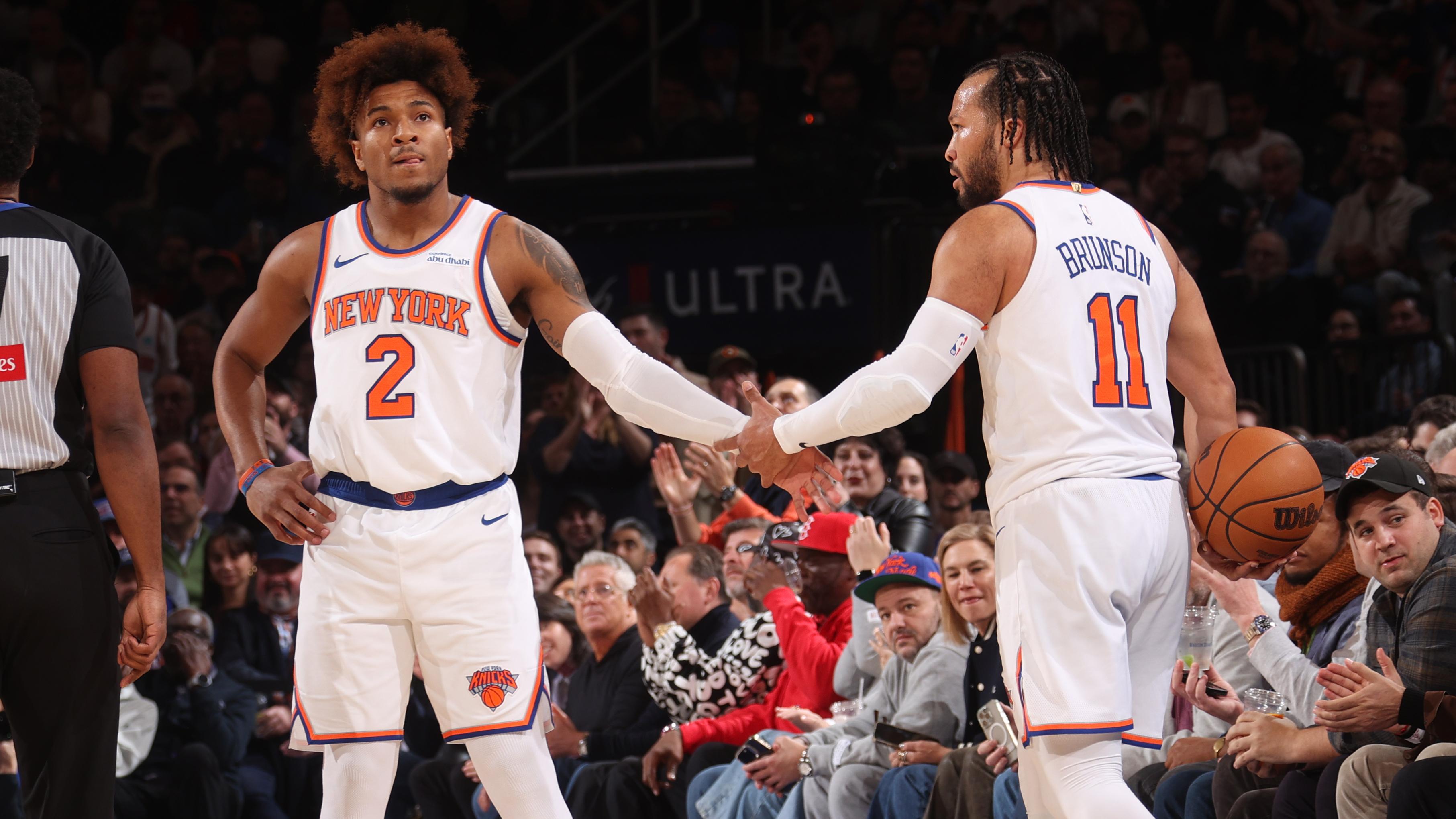
This comes with the caveat that both Jalen Brunson (right ankle) and Deuce McBride (groin) must be healthy. And we must also acknowledge that the latter isn't actually a point guard.
The sentiment stands anyway.
Brunson and McBride are averaging over 12 minutes per appearance together. That is not insubstantial, yet there should be room for more when considering the benefits.
Yes, the Knicks will be smaller. That is problematic knowing how much head coach Tom Thibodeau loves positional size. But McBride's point-of-attack defense has a trickle-down effect, streamlining responsibility for Mikal Bridges and, to a lesser extent, OG Anunoby.
The returns with Anunoby, Brunson, Bridges and McBride on the court through 39 separate appearances support as much. They are outscoring opponents by more than 14 points per 100 possessions (outside garbage time), with top-tier offensive and defensive ratings.
This group is likely getting a tad lucky when looking at other teams' conversion rates around the basket (59.1 percent), but additional perimeter pressure can function as a form of rim protection. If it proves to be noise, Karl-Anthony Towns doesn't have to be in the middle, assuming Mitchell Robinson is healthy.
Getting more of the Anunoby-Brunson-Bridges-McBride foursome will require quicker hooks and fewer minutes for Josh Hart. That's fine. And if McBride isn't healthy or too small for Thibs' taste to get extra run, this setup is worth exploring with Delon Wright. Speaking of...
Landry Shamet and/or Delon Wright will Crack the Playoff Rotation

Knowing Tom Thibodeau, this is probably an either-or proposition. He was barely running a seven-man rotation by the end of last year's playoffs—though, to be fair, injuries forced his hand.
Gauging the authenticity of recent performances from Landry Shamet and Delon Wright is tough. Post-All-Star-break basketball can be less than telltale—and that's putting it charitably.
Still, the Knicks have needed to lean on both more frequently amid injuries to Jalen Brunson, Deuce McBride and Cameron Payne. Their returns in higher-profile roles are encouraging.
Wright brings positional size and an under-the-radar meld of physicality and aggression in pick-and-roll coverages. His case gets stronger if his (modest) number of three-point attempts continue to fall with gaga accuracy (45.5 percent).
Shamet is perhaps the better bet because he arms New York's offense with a true let-'em-rip marksman. His 7.3 long-ball attempts per 36 minutes since the All-Star break are second among Knicks rotation players, trailing only Payne's 7.9, and he's knocking them down at a 40 percent clip.
Looping in Tyler Kolek would be the bolder route to go. His passing, specifically, gives him a plausible path to minutes during Brunson's breathers if Payne isn't healthy or struggles. Chances are, though, Thibs would put Anunoby on a 25-minute cap before including a rookie in the playoff rotation of a should-be contender.
The Karl-Antony Towns-Mitchell Robinson Frontcourt will be a Non-Factor
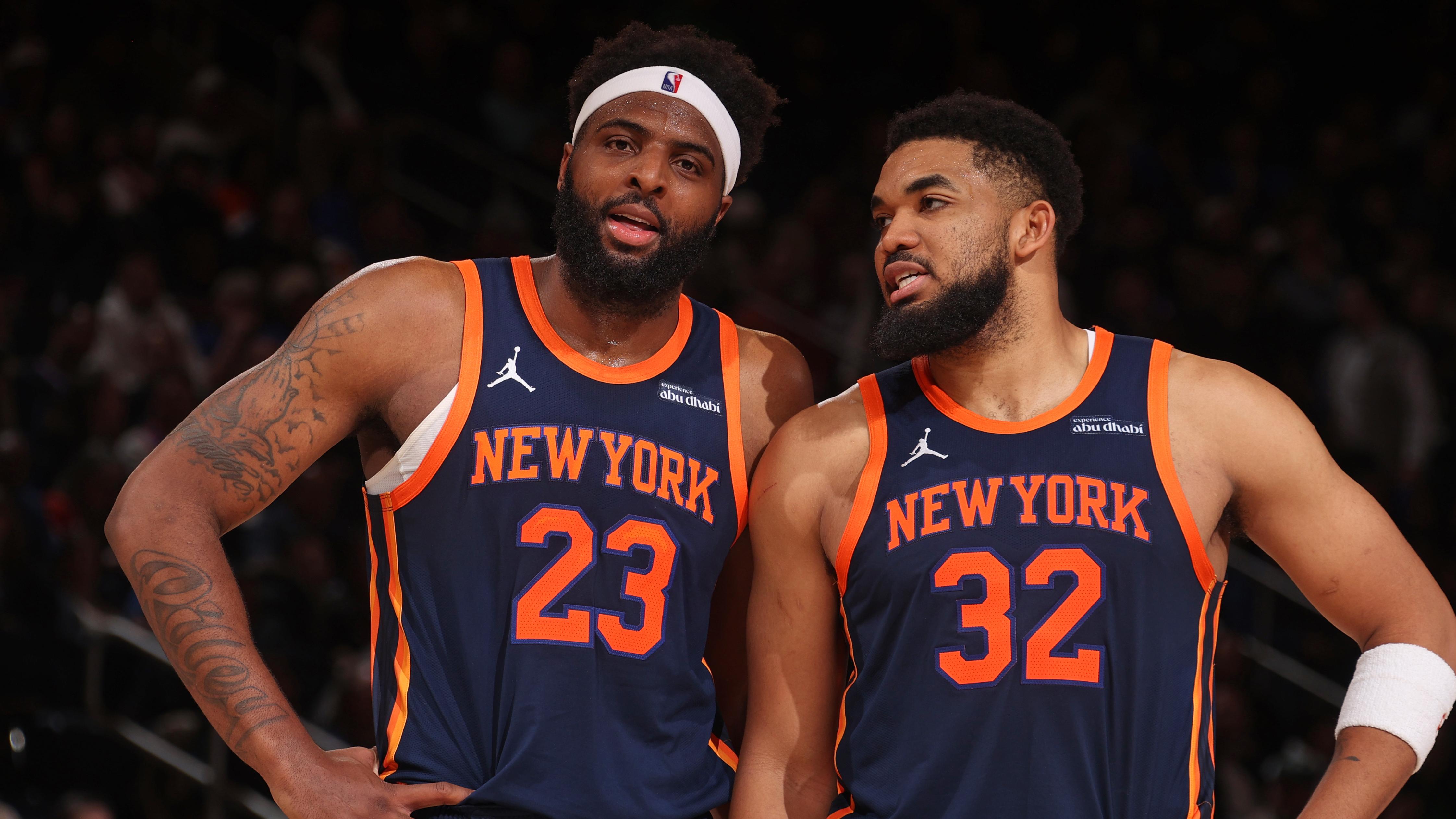
Mitchell Robinson's long-awaited return from a left ankle injury was supposed to coincide with a defensive uptick and semi-frequent experimentation alongside Karl-Anthony Towns.
One of these things is proving true.
Though Robinson missed Wednesday's game due to injury management, he seems to be moving a lot better than when he first returned. More possessions feature him sliding around the perimeter, and while his rim-protection numbers aren't write-home-worthy, the Knicks' half-court defensive rating improves by 7.6 points with him on the floor (97th percentile).
Through Robinson's first 14 appearances, he has totaled just 70 possessions alongside Towns. That sample isn't nearly large enough to prowl for profound takeaways. The offense during these bursts is otherworldly (140.8 ORTG) while the defense has stunk (128.6 DRTG), with opponents nailing almost 50 percent of their triples.
This is less about "Can it work?" and more about "Do the Knicks have the time to make it work?" New York needs more runway to futz and fiddle with this duo—not just how Robinson and Towns work off one another, but who's best served around them. (OG Anunoby has struggled a bunch next to them, going 4-of-14 from the floor, per PBP Stats.)
Turning to the dual-center look in the playoffs without gathering much more information seems unnecessarily risky. It may also be unnecessary, period. Maybe it has some utility in a prospective conference finals matchup with Cleveland. It is nowhere near as essential in the second round against the Boston Celtics, and its upside in the first round against the Detroit Pistons, Indiana Pacers or Milwaukee Bucks does not seem especially high.
OG Anunoby Is the Knicks' Second Most Important Player
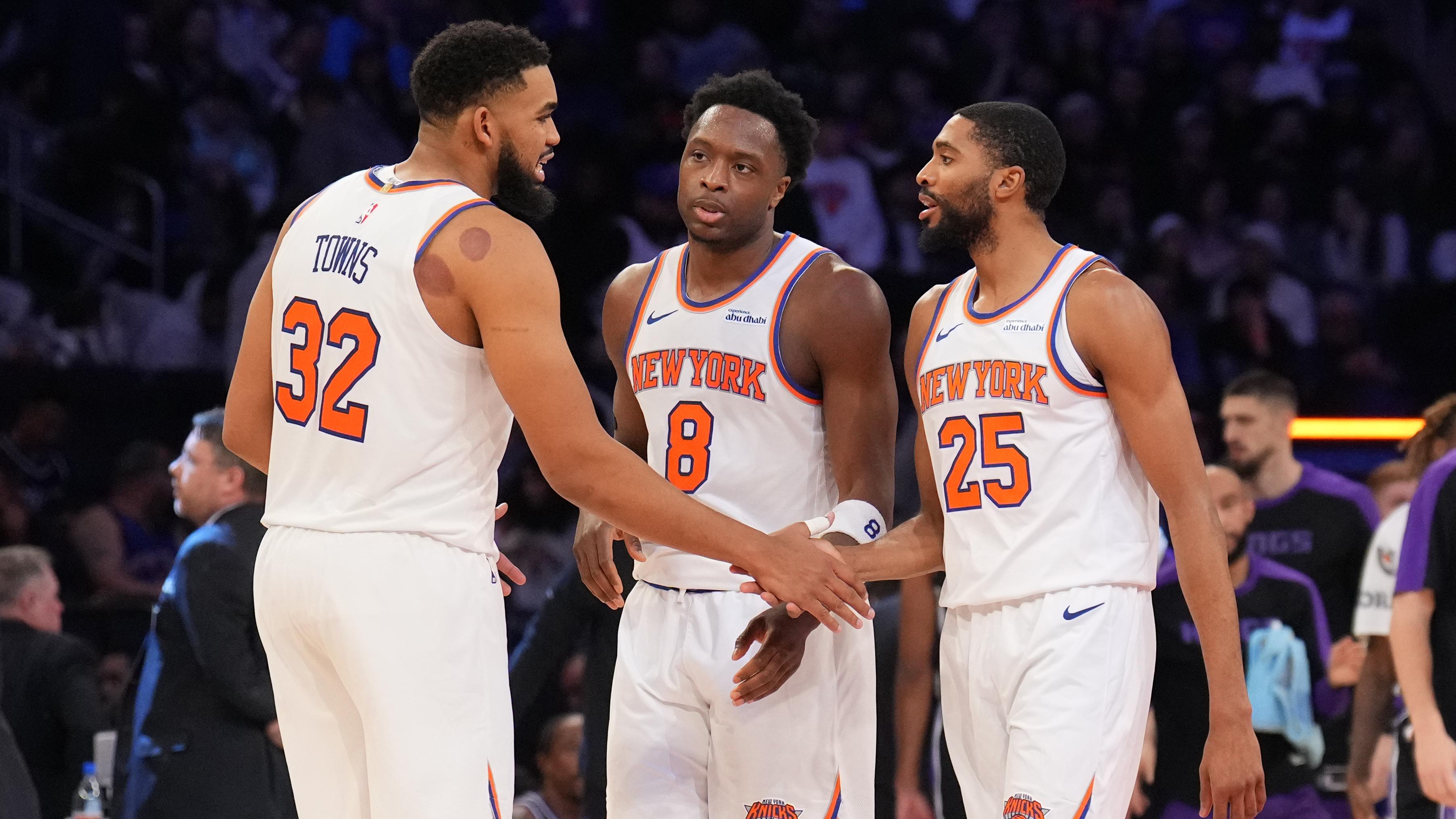
If Jalen Brunson's place atop the Knicks' ladder of importance was ever in any doubt, it has been secured many times over during his absence with a right ankle sprain. Second-in-command honors are nowhere near as open-and-shut.
Per-game numbers suggest they belong to Karl-Anthony Towns. The combination of two-way play and the assets sent out to get him point toward Mikal Bridges.
The actual answer is OG Anunoby.
To be sure, he still isn't someone you want breaking down defenses from a dead stop. He is in the 5th percentile of self-created shot-making efficiency, per BBall Index. But his aggregate volume from three-point range and at the rim is not found in anyone else on this team.
Among 140-plus players to attempt at least 100 shots at the basket and from above the break, Anunoby's rim-and-three frequency places inside the top 15, according to PBP Stats. His driving, in particular, has opened up new avenues inside the arc.
Prior to Brunson's injury, Anunoby averaged around five drives per 36 minutes. He was shooting under 41 percent and getting fouled under 10 percent of the time on those plays. Since then, he's finishing 8.6 drives per 36 minutes while significantly increasing his efficiency (46.3 percent) and foul rate (15 percent).
Both Bridges and KAT can handle more complicated shot-making duties. But a higher-volume version of Anunoby more seamlessly scales to a Brunson-led offense. OG is less inclined to hold the ball as long as Towns or dribble it as much as Bridges.
Bake in the indispensable defense, and Anunoby has bridged the offensive gap between him and his in-house competition enough to be what he is now: New York's second most valuable player.
New York Needs to Avoid This Team in 1st Round
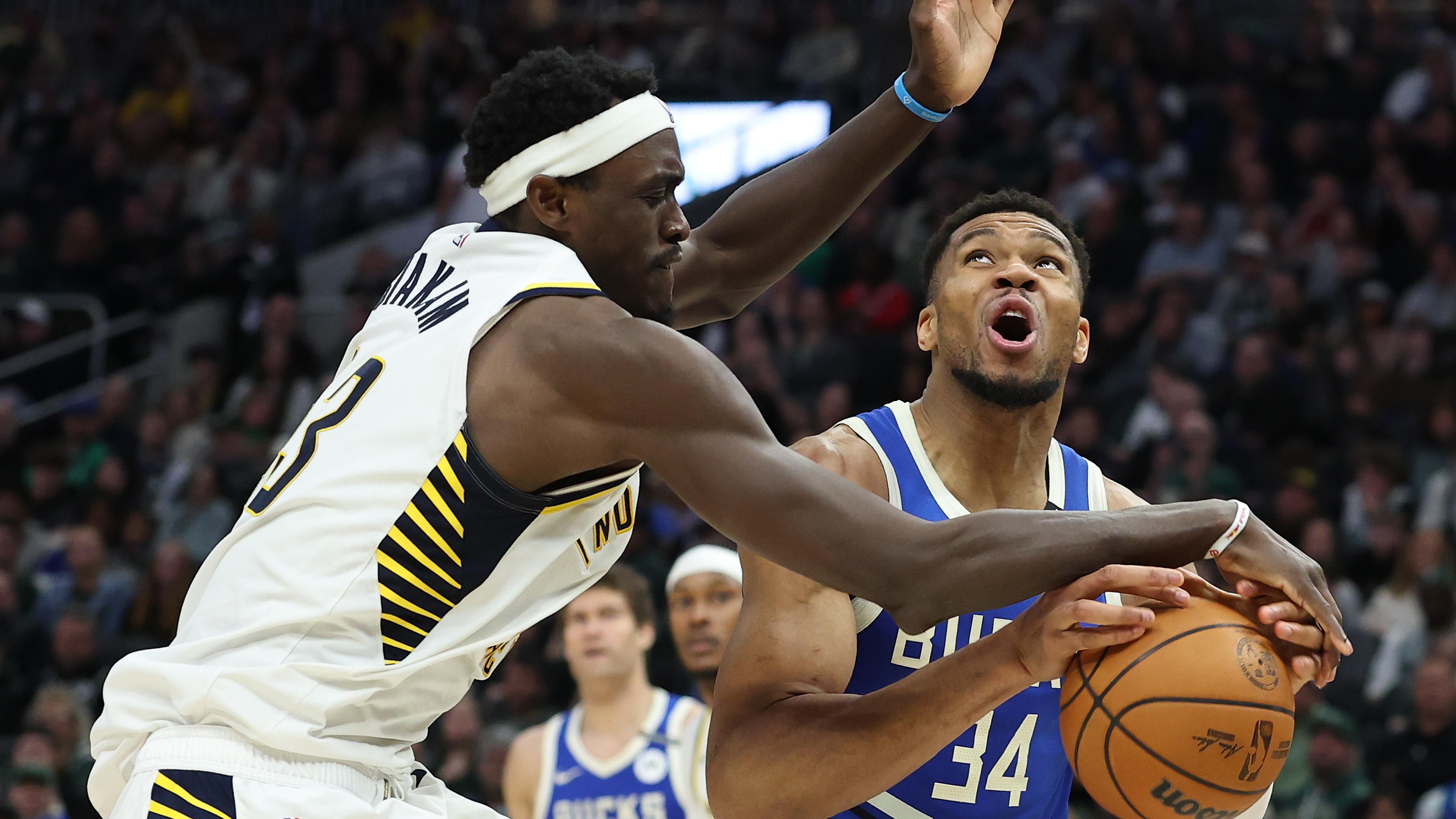
We needn't relitigate the Knicks' struggles against top opponents this season. Both Boston and Cleveland will be heavily favored in a best-of-seven set if either faces New York. And rightfully so.
The Knicks need to reach them—i.e. the Celtics in the second round—for any of this to be an issue. That entails making it out of the first round...which New York will probably do...so long as it doesn't face the...
...Indiana Pacers.
Indy has a top-five offense, top-nine defense and top-six net rating over its last 50—50—games. New York is 2-1 against the Pacers on the year. One of those victories came after Indiana turned the corner.
But the Pacers can play both fast and physical, a uniquely problematic combination for these Knicks. During this same stretch, only five teams allow opponents to spend more time in transition after missing a shot. The returns here are even worse when looking at New York's performances exclusively versus top-10 offenses.
Guarding Indiana in the half-court can be just as challenging. The Knicks aren't adept at defending bigs who stretch the floor, and the Pacers' "slower" attacks are more dynamic with Pascal Siakam, Andrew Nembhard and Bennedict Mathurin as alternatives to Tyrese Haliburton.
Milwaukee has Brook Lopez to stretch the floor at the 5, but Damian Lillard's potential absence due to a blood clot in his right calf significantly lowers its threat level. Detroit's transition attack may give the Knicks fits, but it doesn't have an outside-shooting center—Isaiah Stewart doesn't take threes anymore—and its half-court optionality is more limited.
That makes Indy the worst possible first-round opponent for New York. Fortunately for the third-place Knicks, it looks like the Pacers will finish fourth instead of sixth. But with just two games separating Indy from No. 6, nothing is etched in stone.
Dan Favale covers the NBA for Bleacher Report. Follow him on Bluesky (@danfavale), and subscribe to the Hardwood Knocks podcast, co-hosted by Bleacher Report's Grant Hughes.
Unless otherwise cited, stats courtesy of NBA.com, Basketball Reference, Stathead or Cleaning the Glass. Salary information via Spotrac. Draft-pick obligations via RealGM.





